Famous Diamonds
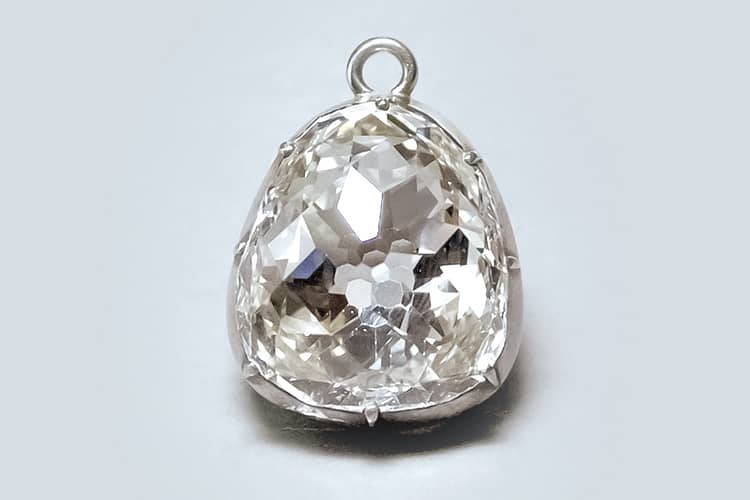
The Beau Sancy, a 34.98 ct, 16th-century faint brown diamond. Photo SSEF.
The Beau Sancy
The first royal owner of the Beau Sancy was Marie de Médicis (second spouse of King Henry IV of France) who, after the King passed away, became regent of the Kingdom of France in 1610. In 1604, Marie de Médicis acquired the Beau Sancy from a diplomat and financier named Nicholas Harlay de Sancy – hence the diamond’s name. The Beau Sancy is also known in France as the ‘Petit Sancy’, as there is another diamond called the Sancy, which weighs 55.23 carats and is to be found in the collection of the Louvre in Paris.
Following her death, the Beau Sancy was given to the Orange-Nassau family of Holland, then it was inherited by Frederick I King of Prussia. It remained part of the crown jewels of Prussia until the abdication of William II in November 1918. It was the property of SKH Prince Georg Friedrich von Preussen until May 2012, when it was sold to an anonymous buyer at a Sotheby’s Geneva auction for ca. US$ 9.57 million.
The Wittelsbach
The original Wittelsbach Diamond (also known as Der Blaue Wittelsbacher) was a 35.56 ct cushion-shaped blue diamond. Its history is typical of the oldest and most famous diamonds. Documentation suggests this diamond was mined in India.
King Philip IV of Spain offered this blue diamond in 1664 to his young daughter Margarita Teresa at the time of her engagement to her uncle the Emperor Leopold I of Austria, whom she married two years later. In 1722, after successive inheritances, the blue diamond became the property of the Archduchess Maria Amalia who married the Wittelsbach Bavarian Crown Prince Charles Albert. The diamond remained the property of the royal Bavarian family until it was sold in the mid-20th century. It resurfaced at auction and was sold by Christie’s in December 2008 to London-based jeweller Laurence Graff for ca. US$ 24.3 million, the highest price ever paid at auction at the time for a diamond. It was slightly recut and renamed the Wittelsbach-Graff Diamond.
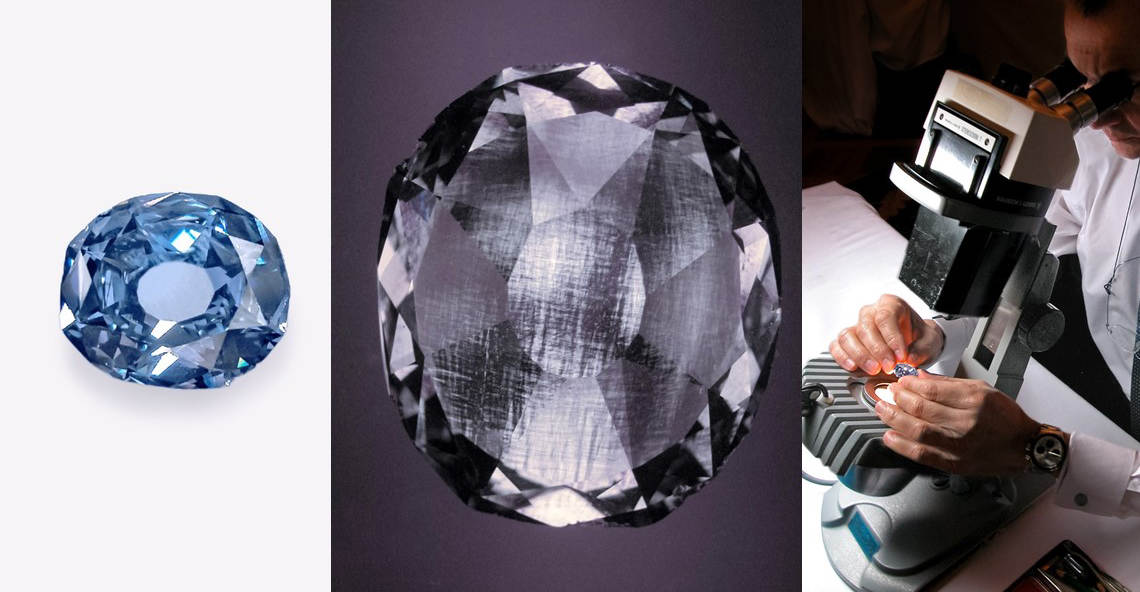
The 35.56 ct Wittelsbach Diamond studied by the SSEF in 2008. The central image shows an exceptional example of ‘tatami strain’ pattern. This pattern is an anomalous birefringence feature that is typical of type II diamonds and appears when the diamond is observed in polarised light. Photos: SSEF.
The Dresden Green
The Dresden Green diamond is a 41 ct diamond that was mined in India and brought to Europe at the beginning of the 18th century. It is one of the most famous coloured diamonds in the world, and an exceptional example of a naturally green-coloured diamond. August III of Saxony bought the diamond in 1741 and had it mounted. It was remounted in 1768 into a new design of a hat brooch in which it is still found today. The Dresden Green diamond was named after the capital of the German state of Saxony and can be seen in the historic Green Vault of the Staatliche Kunstsammlungen in Dresden.
Other famous historic diamonds include the Cullinan, the Hope, the Regent, the Koh-i-Noor, the Orlov, and the Centenary.
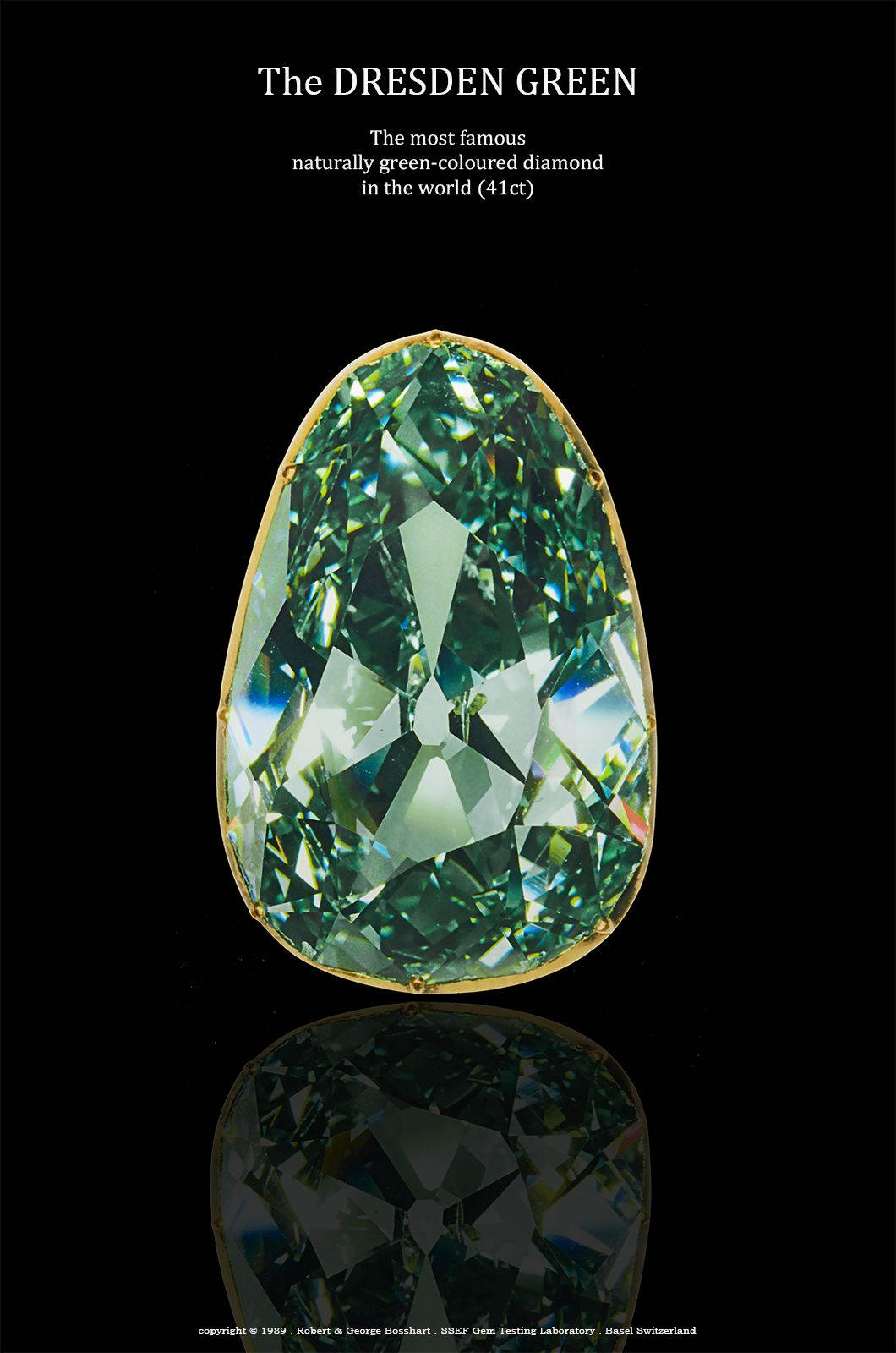
The 41 ct Dresden Green diamond, which was studied by former SSEF director George Bosshart in 1989. Photo: Robert & George Bosshart, SSEF.

The 3,106.75 ct Cullinan rough diamond discovered in 1905 in South Africa, the largest gem-quality diamond ever found. Photo: Wikimedia Commons.
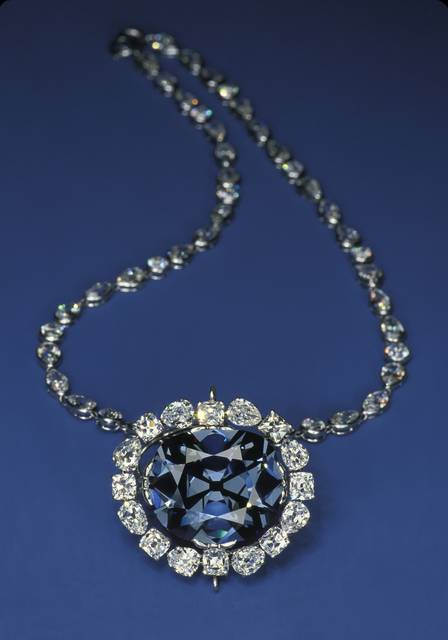
The 45.52 ct blue Hope diamond at the Smithsonian in Washington, DC. Photo: Smithsonian.
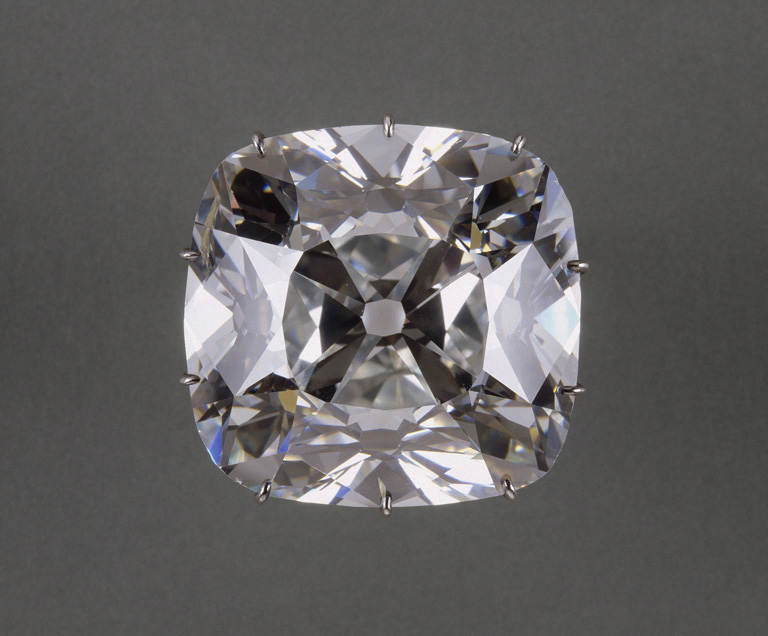
The 140.64 ct Regent diamond, discovered in 1698 in India. Photo: RMN-Louvre Museum.
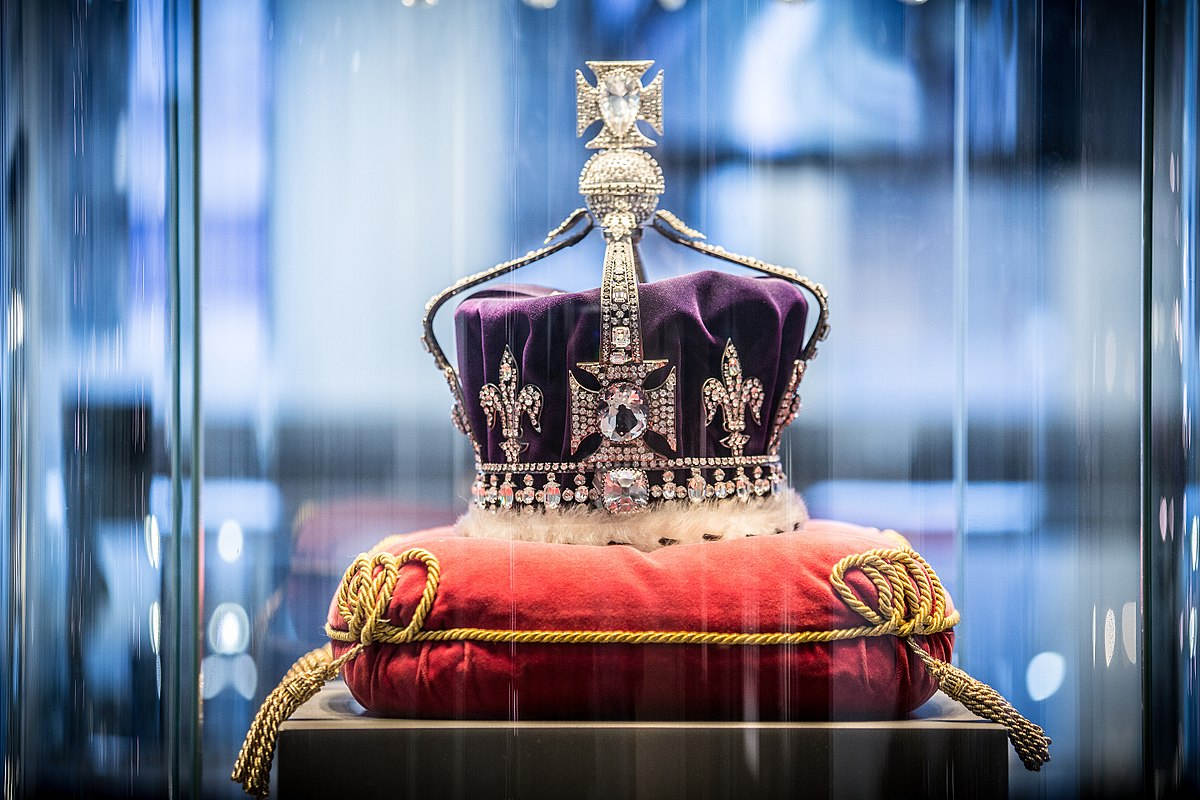
The 105.6 ct Koh-i-Noor diamond in the British crown jewels. Photo: Wikimedia commons.
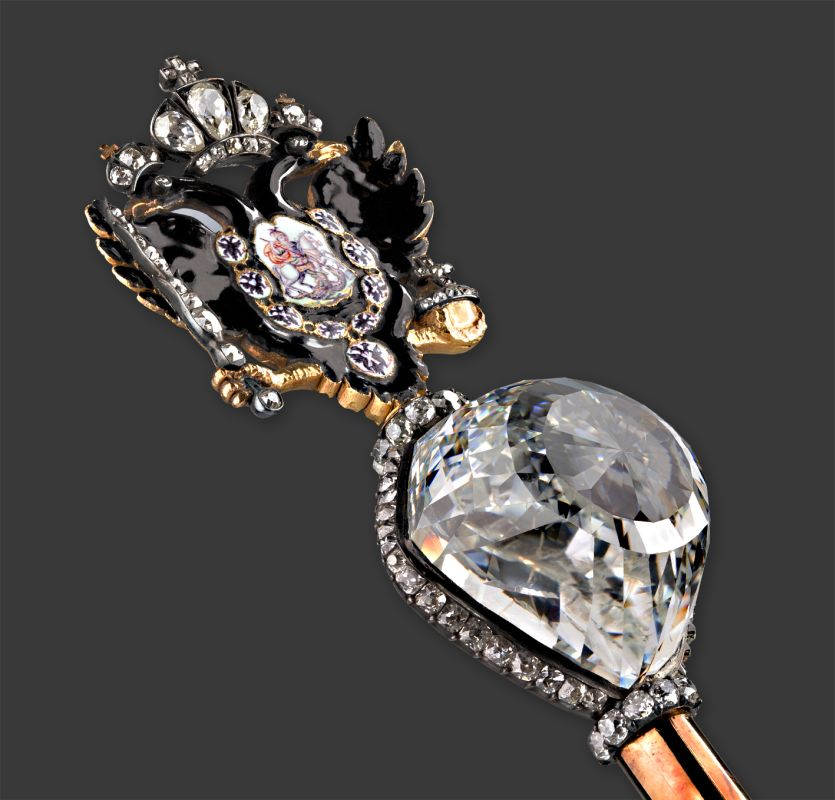
The 189.62 ct Orlov diamond in the Imperial Sceptre. Photo: Gokhran.
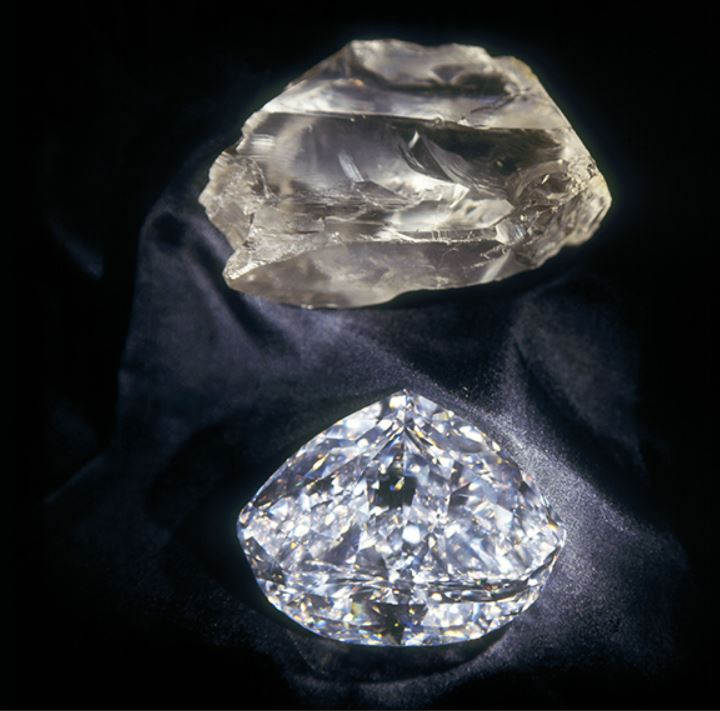
The Centenary diamond rough (599 carats) and cut (273.85 carats). Photo: DTC.
Diamond Records at Auction
The Oppenheimer Blue is a 14.62 ct vivid blue diamond that, in May 2016, became the most expensive jewel ever sold at auction, by Christie’s in Geneva for ca. US$ 57.9 million. The diamond was named for its previous owner Philip Oppenheimer.

The Oppenheimer Blue. Photo: Christie’s.
In April 2017, the world record price for a diamond was surpassed by the 59.60 ct Pink Star diamond. It sold at an auction in Hong Kong for ca. US$ 71.2 million by Sotheby’s.

The Pink Star diamond. Photo: Sotheby’s.
The Graff Vivid Yellow (100.09 carats) set a new world auction record for a yellow diamond in May 2014, at Sotheby’s in Geneva for ca. US$16.3 million.

The Graff Vivid Yellow. Photo: Sotheby’s.
The Moussaieff Red diamond was discovered in the 1980s in Brazil and is an exceptional example of a red diamond.

The Moussaieff Red, a 5.11 ct fancy red diamond. Photo: Moussaieff.
The 101.73 ct flawless pear-shaped D-colour diamond was bought by Harry Winston in 2013 and was named the Winston Legacy. It sold for ca. US$ 26.7 million at Christie’s Geneva.
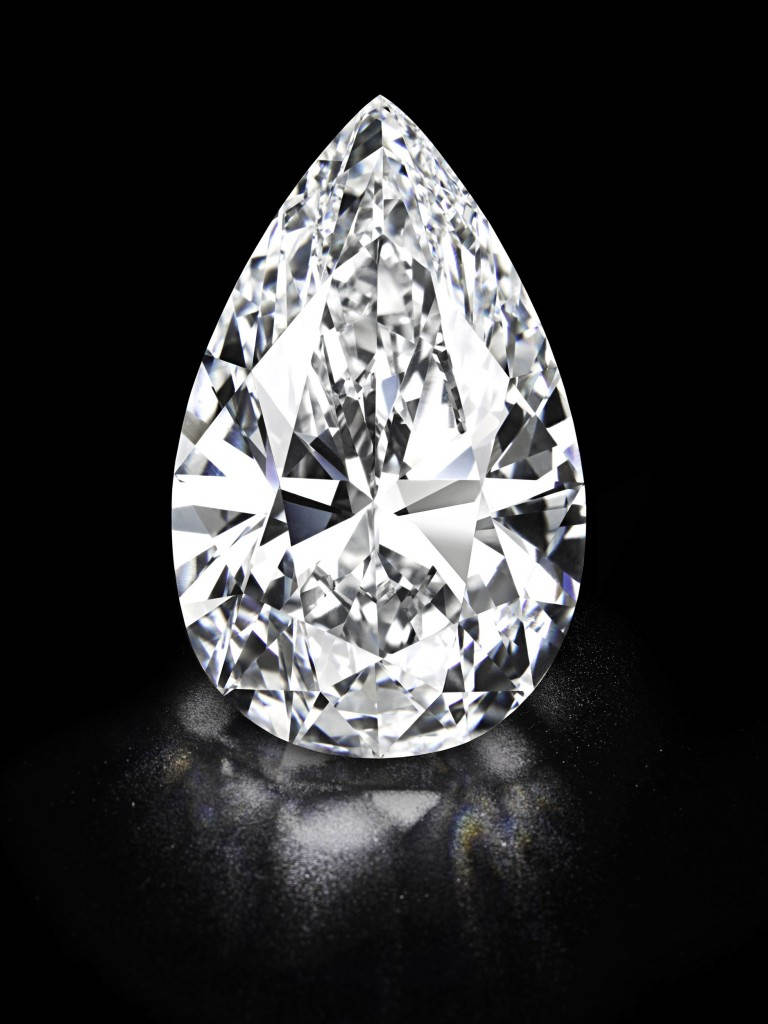
Photo: Christie’s.
In late 2017, a 163.41 ct flawless emerald-cut D-colour diamond was sold by Christie’s Geneva. At ca. US$33.8 million, it is the most expensive colourless diamond sold at auction to date.

Photo: Christie’s.
Other Noteworthy Diamonds
The Incomparable, discovered in 1984 in the Democratic Republic of Congo, was polished in the fourth-largest rough diamond ever found. Uncut, it weighed 890 carats. Although sometimes reported as weighing 407.78 carats, the SSEF tested the Incomparable in 2001 at 407.48 carats. It is brownish yellow with an oblong, sometimes referred to as ‘shield’ shape. Its cutting style is a mixed step-cut and modified brilliant-cut also referred to as ‘fancy cut’.
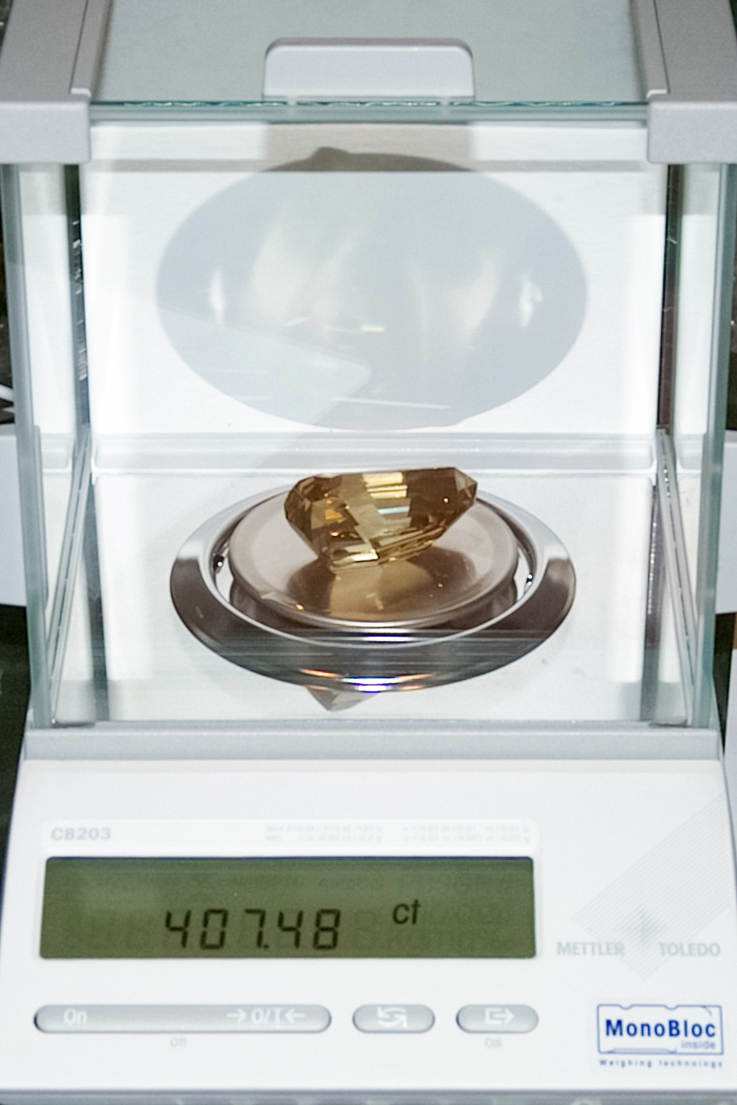
The Incomparable diamond on a scale at SSEF. Photos: SSEF.

The Incomparable diamond at SSEF. Photos: SSEF.
Source: SSEF. Top image: The Beau Sancy, a 34.98 ct, 16th-century faint brown diamond. Photo SSEF.